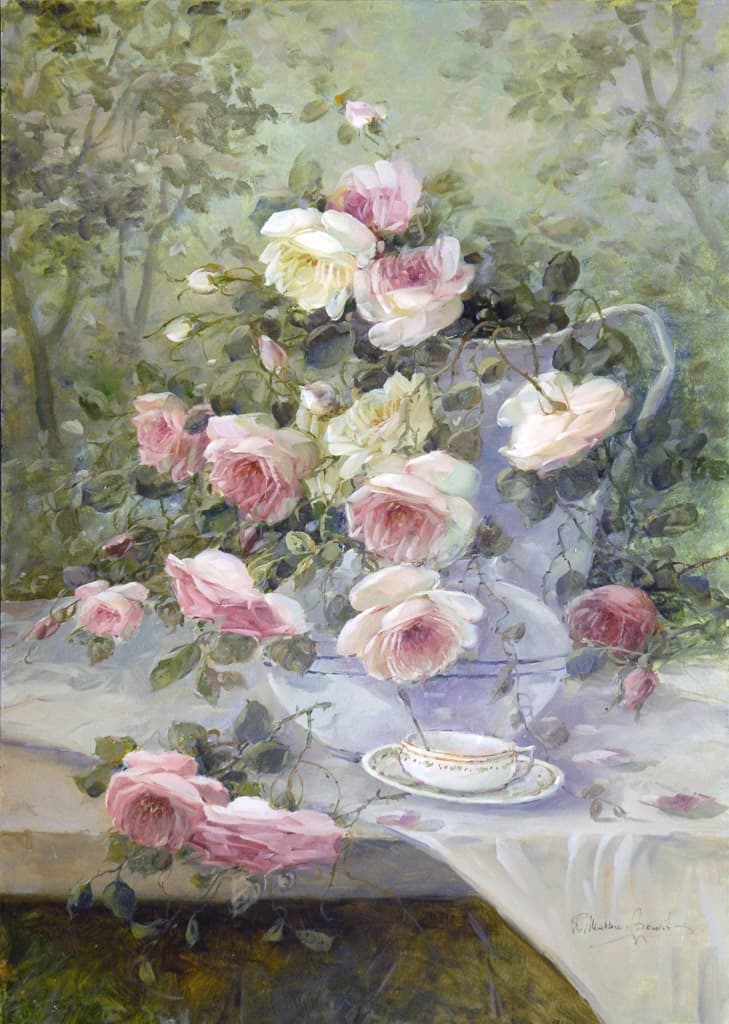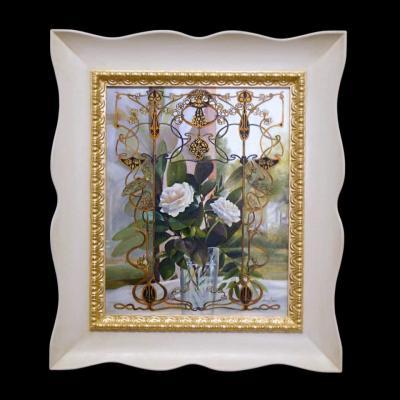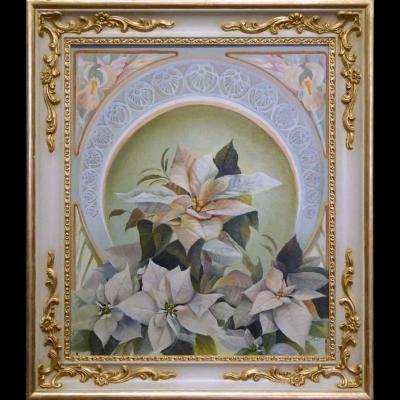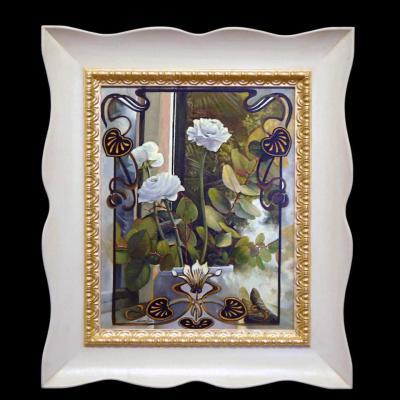The Language of Flowers
SYMBOLS AND EVOLUTION OF THE DEPICTIONS OF FLORAL THEMED PAINTINGS IN ART HISTORY
Flowers are one of the natural subjects most depicted in artwork, and particularly in paintings.
In painting flowers, artists are often representing beauty, love and the great refinement of nature. Flowers are a very beautiful natural element to see and especially one highly decorative for landscapes.
When they are in bloom, with their marvelous colors and either intense or delicate scents, they seem to announce the arrival of the most beautiful season of the year, Spring, which recharges us and makes us feels better after the cold and rainy days of winter.
“The flowers are among the most frequent subjects in the history of painting.”
The Depiction of Flowers in Art
In art, flowers have always been depicted, both in a scenes of a picturesque landscape and a simple still life.
Whether showy decorative elements in a vase or specks of color in a meadow or garden, flowers are among the most frequent subjects in the history of painting of all times and have been depicted by numerous artists according to extremely varying styles and perceptions.
The language of flowers
In general, flowers have always been chosen and perceived as symbols of joy and love.
However, there are also actual dictionaries that allow the deciphering of their meanings. Each flower, with its shape and its particular color, represents a specific emotion, idea or message.
Each flower is the bearer of a unique message and symbolism, and depicting it – or giving it as a gift – means expressing a precise and deep message, able to represent a moment, celebrate an anniversary, or declare a feeling.
In Italy, for example, the rose has always been endowed with specific allegorical meanings. For example, the white rose represents purity, the red rose is the symbol of love, while the yellow rose expresses a message of jealousy.
Poppies, instead, are considered the protectors of premonitory dreams and even of surprises, the water lily is a symbol of esteem and admiration, the Amaryllis means pride, while sunflowers are symbols of devotion and loyalty.

“Again during the Eighteen hundreds, roses became the protagonists of many paintings, generating a true “rose mania”.”
The Annibale Esposti Flower collection
The collection of floral paintings of Annibale Esposti intends to grasp the flower’s value as gift by offering a re-visitation of the most beautiful and meaningful series in the history of art devoted to this theme.
LATE XVI CENTURY
Floral painting began in the Netherlands at the end of the Sixteenth century, with a group of painters among whom Jan Brueghel the Elder (1568-1625), who depicted 58 different species of flowers within a single painting.
Fresh flowers as well as wilted ones, flowers and fruit in a wicker basket, flowers in a glass vase, scattered on the canvas like butterflies (symbols of lightness), little snails (which allude to the inexorable passage of time), or ants (representing wisdom in the preparation for the future): these are all elements that appear very frequently in hand painted works from the 1600 school.
The pictorial technique typically utilized in these works conveys the refinement of the subject matter: veiling and strong contrasts between light and shadow are in fact the strongpoints of oil painting of this era.

THE EIGHTEEN HUNDREDS
In the Eighteen hundreds, far from the clear-cut precision of the Biedermeier trend, which had influenced Hayez as well, floral painting was revised and filled with light and color, through loose brushstrokes. It was the time of the famous school of Lyons.

IMPRESSIONISM
Toward the end of the century, by making use of naturalistic and floral elements and particularly of roses, painting gained freedom and the surfaces of paintings were filled with color.
A typical and very well-known trend from this era is Impressionism, which, focusing its interest on color rather than on outline, exasperated the contrast between light tones and shadows.
ART NOUVEAU
Lastly, during the art nouveau and deco period, floral themed paintings represented prototypes of the pastel tones (such as yellow, baby blue, lilac and pink) that still continue to influence designers and stylists.





 English
English  Italiano
Italiano